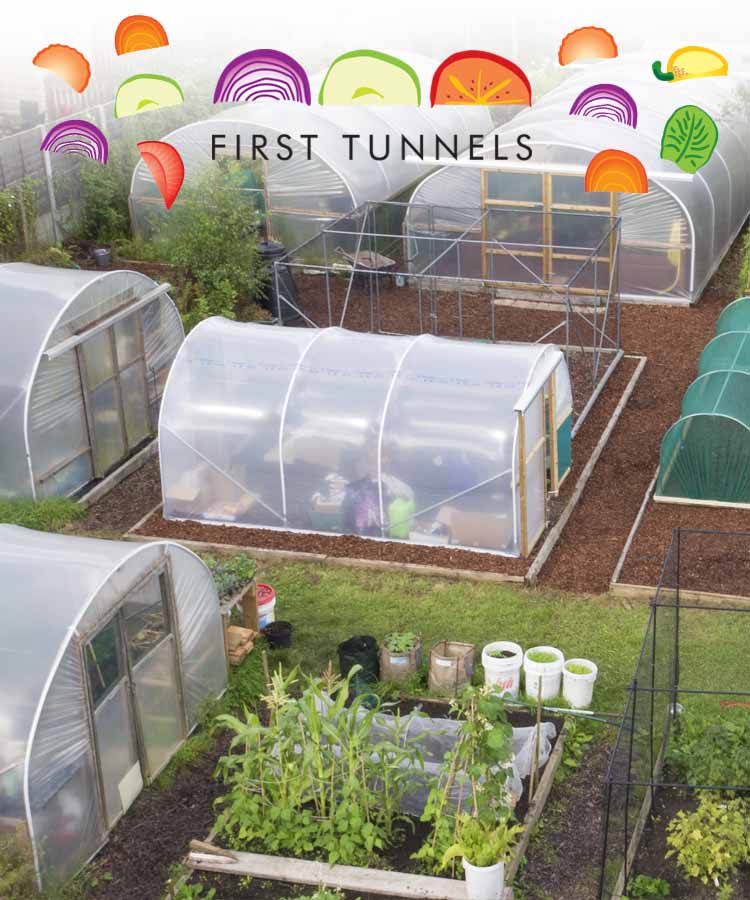In organic gardening, there is a school of thought that suggests that 'no dig' gardening can provide better yields and a more sustainable system. By leaving soil relatively undisturbed by tilling or digging, you can ensure that the soil ecosystem functions fully and well. The soil ecosystem is important to organic growing in your polytunnel as well as elsewhere in your garden. A biodiverse soil ecosystem will work in harmony with your growing plants and can increase yield substantially. The most important element of a successful 'no dig' system is providing mulches to replenish the nutrients that crops take from the soil in your polytunnel.
Growing your own mulches in your polytunnel could be a good use of some of the space. Factoring in the mulches you will require when planning your polytunnel planting is a good idea. You may be tempted to give over every inch of your polytunnel, all year round, to edible crops. But though you may think this would give you more to eat, over time, the yield will be higher if you have also given over some of your space to help maintain soil fertility.
Bear in mind that there are many different ways to grow mulches. Mulches are used in 'no dig' gardening for a range of different purposes, not just to return nutrients to the soil. Woody mulches may help to draw excess nitrogen from the soil, and can also, as heavy mulches, be effective at suppressing weeds. Prunings from polytunnel fruit trees and shrubs can be chipped and used for this purpose. Speaking of weeds, non-seeding weeds can also be spread around plants as mulch, so giving over some space in your polytunnel to the more useful weeds might not always be a bad thing.
If you leave a grass path through your polytunnel, between raised beds, then this can be considered as a growing mulch – when mowed, the grass clippings make a great mulch for nitrogen-hungry leafy plants. Flowering and fruiting plants, however, require a more balanced fertiliser and will do better with a less nitrogen -heavy mulch.
Comfrey leaves can be an ideal mulch for tomatoes and other such crops. Setting aside a little of your space, either in or near your polytunnel, for a comfrey patch is a very good idea. Though it will take up quite a lot of space inside a tunnel, one reason you may wish to dedicate that space to comfrey is that it will come back year after year with a bountiful supply of leaves for your mulch and will also attract bees and other pollinators into your polytunnel.
